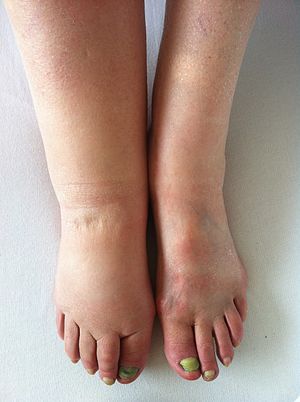Bioimpedance is the resistance of any biological tissue between two defined points. Usually the two points may be the two extremities – for example the hand and the foot. This has been measured for many years and a single value of resistance called bioimpedance has been used in many areas to estimate percentage of fat, fluid and other bodily components. The research goes back many years. The science is confusing since there is a significant variability in impedance in different populations, but these values are still being adopted.
Bioimpedance spectroscopy is the measurement of resistance to an alternating current or voltage. The frequency is usually varied from 50 Hz to few KiloHertz.
These measurements have been used frequently and the science is interesting since it is possible that there may be individual variation but the change in impedance for any one person may reflect a change in their fluid composition. One area that has been investigated has been lymphadepathy – accumulation of fluid in any specific region of the lymph node or any other region where lymph accumulates. This can be assessed by a change in impedance.
This has been used by a company called Impedimed and they have created a device that does impedance spectroscopy that can compare changes in lymphadenopathy between limbs and offers a single score. They have thus simplified a very complex measurement and determined a score called L-dex. Thus if the difference is significant the L-dex ratio changes and implies change in 1 limb vs the other.

The science seems obvious. The accumulation of fluid will change the impedance and the pattern of impedance may be reflective of the disease.
They have several references mentioned on their website.
Impedimed has thus done several things right. Good instrument, good score, they also suggest longitudinal studies for patients and have site references for research that goes back several years.
However, one thing they do not have is a good randomized clinical trial that shows that the change in impedance can be correlated with the disease. Several reasons may be responsible for this lack of clinical data (as mentioned on their website) but not having such a measurement may affect the utility of this measure.
Curious to think about how such a well patented device that is based on many previous studies may be used in the clinic for other indications and what clinical trial would support its use?
